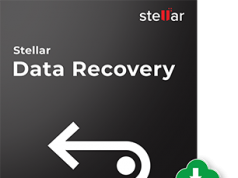The DAST software is still useful and necessary for cybersecurity in today’s corporate environment. Despite the many new tools and technologies that have arisen in the past few years, DAST remains a valuable way to assess your organization’s security posture. In this blog post, we will discuss why DAST is still relevant and how you can get the most out of it. We will also explore some alternatives to DAST if you feel this approach is not right for your organization.
What Is DAST?
DAST, or Dynamic Application Security Testing, is a type of security testing that assesses the security of an application in real time, executing it in a controlled environment and monitoring its behavior. DAST can be used to find vulnerabilities such as SQL injection, cross-site scripting (XSS), and buffer overflows.
Why Is DAST Relevant?
Despite the rise of new tools and technologies, DAST is still relevant for several reasons. First, DAST is one of the few ways to detect specific types of vulnerabilities. Second, DAST can be used to supplement other types of testing, such as static analysis and pentesting. Finally, DAST is relatively easy to set up and use, making it a good option for organizations that do not have the resources to invest in more complex testing tools.
Different Types Of DAST
There are two main types of DAST: black-box testing and white-box testing. The most frequent type of DAST is black-box testing. The tester in black-box testing does not have access to the application’s source code or internal structure. White-box testing, on the other hand, necessitates access to the application’s source code and internal architecture.
Types of Organizations That Need DAST
DAST is a good option for any organization that stores, processes, or transmits sensitive data. This includes organizations in the financial, healthcare, and retail industries. DAST is also a good choice for organizations that are required to comply with regulations such as PCI DSS and HIPAA.
Organizations that develop their own applications need DAST the most. This is due to the fact that these companies are more likely to have software vulnerabilities. Organizations that use only off-the-shelf applications need DAST the least. However, even these organizations should consider using DAST on a regular basis.
Features of DAST That Make It a Good Cybersecurity Measure
DAST is a good cybersecurity measure because it can find vulnerabilities that other types of testing cannot. For example, DAST can find vulnerabilities in applications that are not publicly accessible, such as those behind a firewall. Additionally, DAST can test for vulnerabilities that require user interaction, such as cross-site scripting (XSS) and SQL injection.
Tips for Doing DAST Right
There are several things you can do to ensure that your DAST testing is effective-
- First, make sure to test all of the components of your application, including the front-end, back-end, and database.
- Second, create a comprehensive test plan that covers all aspects of security testing.
- Finally, work with a trusted partner who has experience conducting DAST testing.
Tools For Conduct DAST
There are several DAST alternatives to select from if you decide to use it. Some popular options include IBM AppScan, Hewlett-Packard WebInspect, and Rapid007 Nexpose. Other popular tools include:-
- Astra’s Pentest Suite offers automated DAST along with other services to safeguard applications like pentesting, vulnerability scanning, and more.
- One popular DAST tool is WebInspect from HP. This utility may be used to examine the security of online applications and web services. WebInspect can be used to find vulnerabilities such as SQL injection, cross-site scripting (XSS), and buffer overflows.
- WAS is a cloud-based security assessment solution from the makers of Web Application Scanner (WAS) that includes a wide range of capabilities for performing DAST testing. Qualys WAS may be used to evaluate the cybersecurity of web applications, web services, and mobile apps.
Alternatives to DAST
If you feel that DAST is not right for your organization, there are several alternatives you can consider. One option is to use a tool that combines DAST and other types of testing, such as static analysis or penetration testing. Another option is to use a cloud-based security assessment service, which can be more cost-effective than traditional DAST tools.
Conclusion
DAST software is still relevant and necessary for cybersecurity in today’s business world. Despite the many new tools and technologies that have arisen in the past few years, DAST remains a valuable way to assess your organization’s security posture. In this blog post, we have discussed why DAST is still relevant and how you can get the most out of it. We have also explored some alternatives to DAST if you feel this approach is not right for your organization.
Author Bio-
Ankit Pahuja is the Marketing Lead & Evangelist at Astra Security. Ever since his adulthood (literally, he was 20 years old), he began finding vulnerabilities in websites & network infrastructures. Starting his professional career as a software engineer at one of the unicorns enables him in bringing “engineering in marketing” to reality. Working actively in the cybersecurity space for more than 2 years makes him the perfect T-shaped marketing professional. Ankit is an avid speaker in the security space and has delivered various talks in top companies, early-age startups, and online events.
Follow Technoroll for more!





